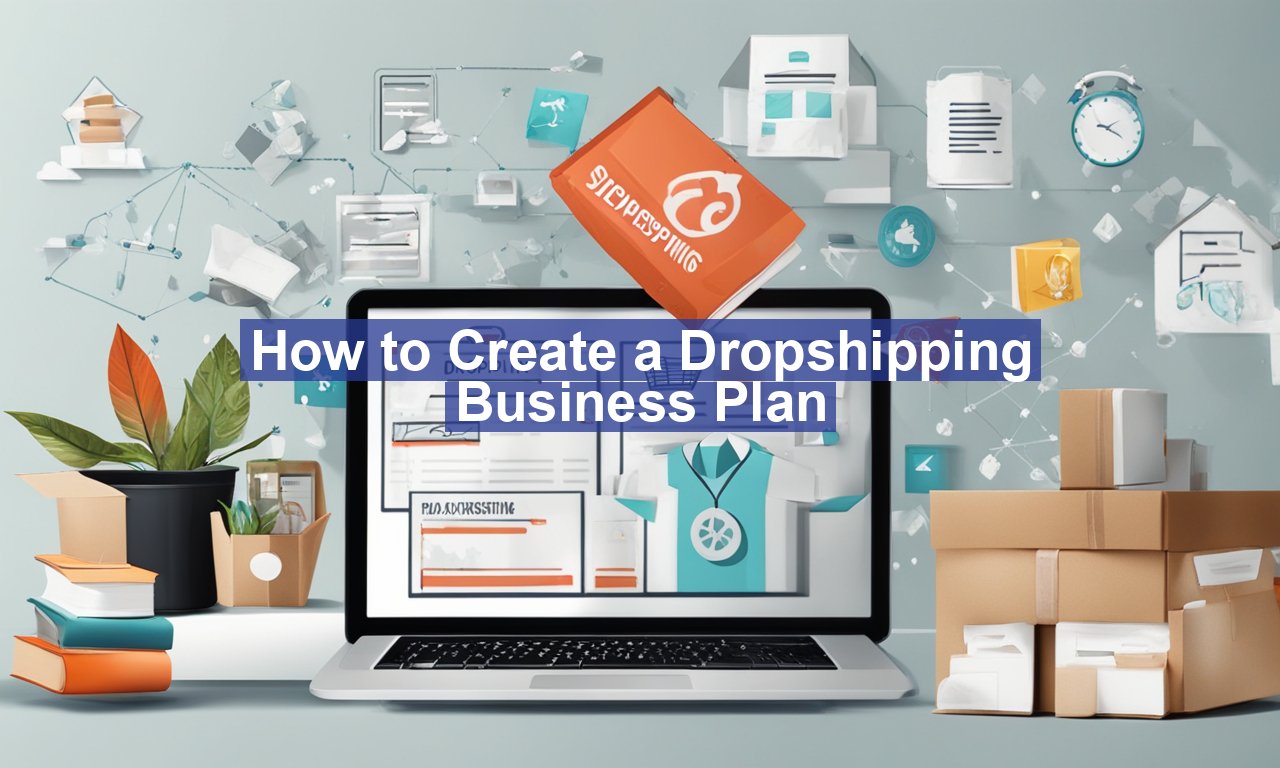How to create a Dropshipping business plan Are you dreaming of launching a successful online store without the hassle of managing inventory? Dropshipping might just be the perfect solution for you. This business model is transforming e-commerce by allowing entrepreneurs to sell products without keeping them in stock. Instead, when you make a sale, you purchase the item from a third party and have it shipped directly to the customer. It’s a straightforward concept, but success demands a well-thought-out business plan.
In this article, we’ll outline the essential components of creating an effective dropshipping business plan, ensuring your venture is set up for long-term success.
How to Create a Dropshipping Business Plan Step-by-Step Guide
Why You Need a Dropshipping Business Plan
Many aspiring entrepreneurs dive into dropshipping with high hopes and minimal planning, only to face unexpected challenges. A comprehensive business plan serves as your roadmap, helping you clarify your business goals, strategies, and potential obstacles. It sets the foundation for a scalable and profitable business. More than just a formality, a solid business plan keeps you focused and aligned with your objectives.
Define Your Niche
Before anything else, figure out the niche you want to target. Your chosen niche should be specific enough to reduce competition but broad enough to ensure demand. Here’s how to select one:
- Research: Use tools like Google Trends to assess interest in potential niches. Keywords Everywhere and other SEO tools can help you gauge search volume.
- Passion or Profit: Ideally, find a niche that interests you or has the potential for profitability. Balancing both can fuel excitement and sustainability.
- Check Competition: Analyze how many players are in the field. Competitors can mean validation of a niche but also greater competition.
A well-chosen niche can drastically increase your chances of building a successful brand.
Conduct Market Research
Once you’ve defined your niche, it’s time to dive deeper into market research. This ensures there’s demand and helps you understand your target audience. Consider the following:
- Identify Your Audience: Who will buy your products? Which platforms do they spend the most time on? Age, gender, purchasing habits, and interests are crucial demographics to gather.
- Competitor Analysis: Who are your main competitors? Analyze their strengths and weaknesses. Services like Semrush or Ahrefs can give insights into their traffic sources and top pages.
- Demand Evaluation: Use Amazon Best Sellers, eBay research tools, and similar platforms to gauge demand for your products.
Establish Your Brand Identity
Your brand is more than just a name or logo. It’s how your audience perceives you. Your brand identity should resonate with your target audience, creating a memorable experience that encourages repeat business.
- Name & Logo: Choose a memorable and relevant name. Your logo should be simple, reflecting your brand’s essence.
- Values & Voice: What are your brand’s core values? How do you want to communicate with your customers? Whether it’s friendly or professional, consistency is key.
Select Reliable Suppliers
Suppliers are the backbone of your dropshipping business. Bad suppliers can lead to delays, poor quality, and unsatisfied customers. Here’s how to find and evaluate them:
- Research: Directories like Alibaba and Oberlo are popular starting points. Ensure potential suppliers are reputable and experienced.
- Quality Check: Order samples to evaluate the quality and shipping time. This firsthand experience is invaluable when appraising suppliers.
- Communication: They should be responsive and transparent. Clear communication can help prevent many issues.
An in-depth evaluation of your suppliers sets you up for operational success.
Plan Your Marketing Strategy
Marketing is essential for driving traffic and generating sales. Without it, even the best dropshipping stores stagnate. Consider these channels:
- Social Media: Platforms like Facebook, Instagram, or TikTok are powerful for promoting products and engaging with customers.
- Content Marketing: Blogs, videos, and other content can position you as an authority in your niche, fostering trust.
- PPC Advertising: Paid campaigns can boost visibility quickly on search engines or social platforms.
Tailor your marketing efforts to suit your audience’s habits and preferences, maximizing your return on investment.
Financial Plan and Budgeting
While dropshipping has lower initial investments compared to traditional retail, a clear financial plan is still crucial. Consider these aspects:
- Startup Costs: Factor in domain registration, website hosting, and any other initial expenses.
- Running Expenses: This includes marketing, subscriptions for tools, and transactions fees from platforms like Shopify.
- Profit Margins: Calculate potential earnings and assess the effort needed to achieve your financial goals.
Setting a realistic budget keeps finances in check and guides growth.
Legal and Logistic Considerations
While starting a business is exciting, it’s essential to address any legal and logistic considerations. Ensure compliance with the following:
- Business Structure: Decide on a structure (e.g., LLC, sole proprietorship) and register your business accordingly.
- Tax Obligations: Understand federal, state, and international tax responsibilities.
- Customer Service Policies: Have clear return policies and customer service guidelines to build trust.
Compliance with legal standards safeguards your business against potential issues.
Tools and Resources
Leveraging the right tools can streamline your operations. Explore options like:
- E-commerce Platforms: Shopify, WooCommerce, or BigCommerce for website hosting.
- Product Sourcing: Oberlo, Spocket, or AliDropship.
- Email Marketing: Mailchimp or Klaviyo for reaching out to customers and prospects.
Incorporating these tools enhances the efficiency and effectiveness of your operations.
Conclusion
Creating a dropshipping business plan is your first step towards a thriving online business. By defining your niche, researching the market, establishing your brand, selecting reliable suppliers, and crafting a comprehensive marketing and financial plan, you set a strong foundation for success. With the right strategy and resources, you can navigate this competitive landscape and turn your vision into a profitable venture. If you’re looking to delve deeper into the intricacies of e-commerce, consider reading through more detailed guides on renowned platforms like Shopify or Oberlo. They offer a wealth of information to help craft a successful pathway in dropshipping. Remember, every successful business once started with a well-laid plan!


